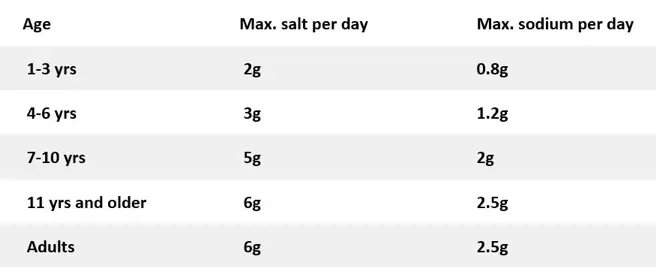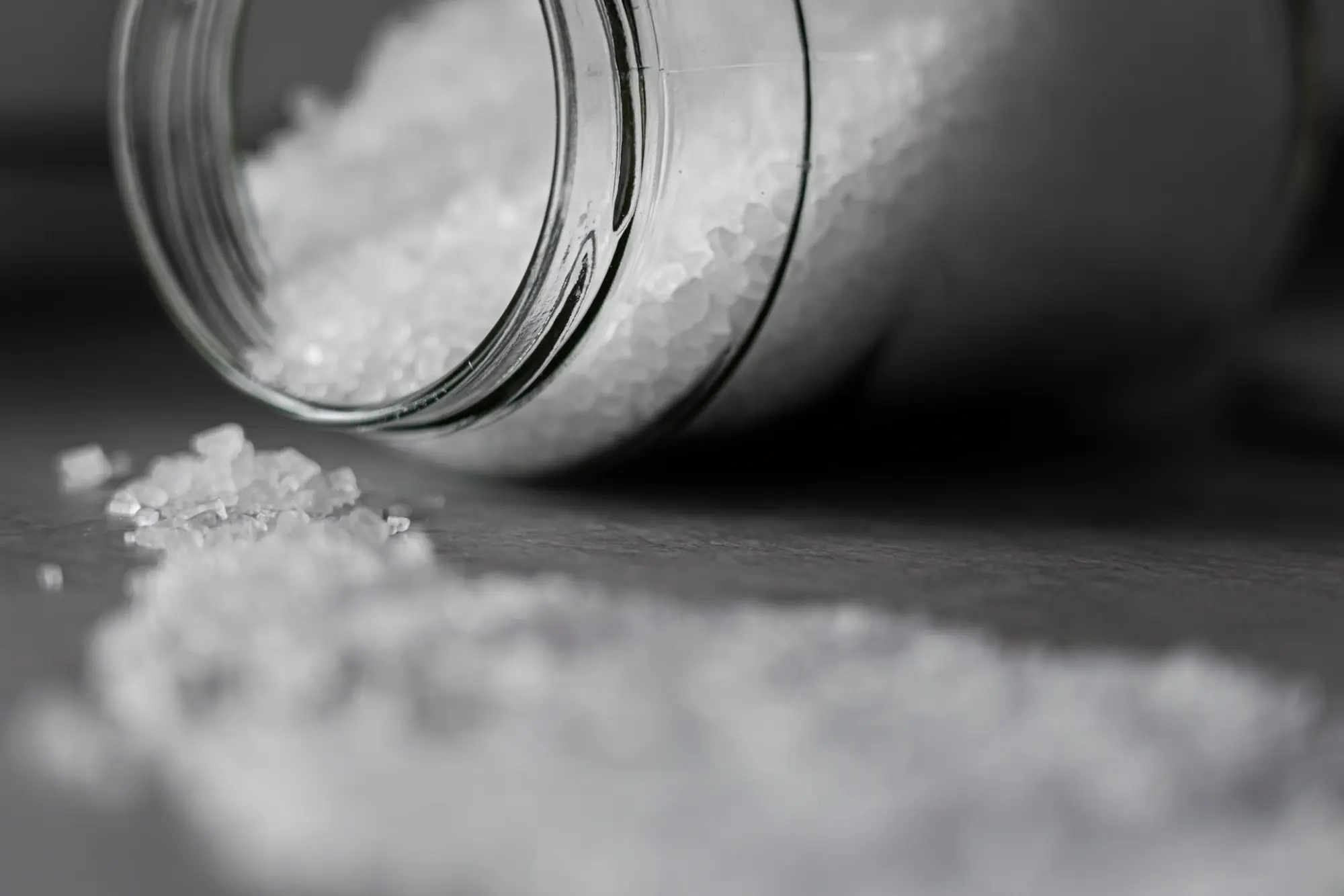Most people worldwide consume too much salt — on average 9-12 grams per day, or around twice the maximum recommended intake. (1,2) This has a significant impact on health: in fact, it’s estimated that approximately 2.5 million deaths could be prevented each year if global salt consumption was reduced to the recommended level. (1)
High salt consumption can increase the risk of high blood pressure, heart disease and stroke (3). According to the World Health Organisation, reducing salt intake has been identified as one of the most cost-effective measures countries can take to improve population health outcomes (1) — something that nutrition professionals need to bear in mind when working with clients.
As a result, there is an urgent need to implement strategies that reduce the intake of salt across populations. One example is using fiscal policies and regulations that encourage food manufacturers and retailers to develop, produce and sell foods with better nutritional profiles at affordable prices. Other strategies include increasing public education around salt consumption, empowering consumers to make better and more informed food choices. (1,2)
What exactly is salt?
Salt, also known as sodium chloride, is about 40% sodium and 60% chloride. It flavours food and is used as a binder and stabiliser. It is also a preservative, as bacteria can’t thrive in the presence of a high amount of salt. (4) In the days before refrigeration, salt was one of the most commonly used preservatives; this is the origin story for cured meats and fish, pickled vegetables and even cheese.
The human body requires a small amount of sodium to conduct nerve impulses, contract and relax muscles, and maintain the proper balance of water and minerals. However, high consumption is linked with adverse health outcomes as mentioned above. (4)
How much salt is too much salt?
The human body actually needs less than 1 gram of salt per day. (2) The recommendations depend on age group, and the British Heart Foundation (BHF) recommends the following (3):

It is worth noting that some food labels refer to salt as ‘sodium’ instead. Salt and sodium are measured slightly differently; the recommended daily sodium intake for adults is less than 2.5g per day. (1)
The recommended daily intake of salt (or sodium) includes the amount already included in ready-made and processed foods, as well as the salt you add when you cook and eat. (1,2,3,4)
It might be easy to think our salt consumption isn’t that high, but it’s easy to underestimate, since around 75% of the salt we eat is already present in the foods we buy, including breads, breakfast cereals and ready meals (5). In today’s food system, there is ready availability of highly processed foods worldwide, and these foods are generally energy-dense and high in sugar, saturated fats and salt. Not only are these foods everywhere, but they are becoming increasingly affordable, sometimes more so than less processed alternatives. (1) Read on for some helpful ways in which your clients can reduce their intakes.
How can we reduce our intake of salt?
1. Reading food labels
This is probably one of the most helpful tips when it comes to choosing foods, as checking out food labels allows you to compare brands, varieties and flavours of products and choose those that are lower in salt. Most labels tell us how much salt is present. If a value for sodium is given, this number can be multiplied by 2.5 to get the value for salt.
Recent labelling systems combine nutritional information with colour coding, which makes it much easier to quickly identify which foods are low in calories, saturated fat, sugar and salt. These systems have been increasingly adopted by food businesses across the UK and Europe.
- Low (green) = Less than 0.3g salt per 100g of food
- Medium (yellow) = 0.3g – 1.5g salt per 100g of food
- High (red) = over 1.5g salt per 100g of food
2. Limiting our intake of processed foods
Processed foods are generally the biggest source of salt in our diet. These include foods like baked beans, soups, processed meats (e.g. ham, bacon, salami), smoked foods, ready meals, restaurant and takeaway foods, some cereals and even bread. While some of these foods are difficult to avoid consistently, like bread and cereal, it’s worth noting that salt content can vary greatly from brand to brand, which is why it is so important to check food labels before choosing.
3. Eating more fresh foods
Eating fresh foods with no added salt can really help with salt reduction. Here’s a few examples of foods that are generally lower in salt.
- Fresh fruits: apples, pears, bananas, peaches, plums, strawberries, blueberries, raspberries, grapes, passion fruit, kiwis
- Fresh vegetables: carrots, broccoli, cauliflower, peppers, aubergines, courgettes, tomatoes, spinach, garlic
- Legumes (no added salt): beans, lentils, chickpeas
- Nuts (unsalted): almonds, walnut, cashew, peanuts
- Seeds: pumpkin, chia, sunflower, poppy, sesame
- Fresh meat: beef, pork, lamb, chicken, turkey, duck
- Fresh fish: salmon, tuna, cod, haddock, plaice, seabass, white fish
- Dairy: milk, low salt cheese, yoghurt, unsalted margarine/butter
- Eggs
When buying tinned foods, it’s important to choose the versions with no added salt.
4. Alternative seasonings
Besides salt, there are many seasonings that can be used to flavour food. Things like black pepper, fresh or dried herbs and spices will often take your meals to another level. Many people add salt out of habit, but it’s often unnecessary and food will still taste good without it — sometimes even better!
5. Cooking at home
Last, but not least, cooking at home allows clients to control exactly what goes into their food. Here, they can put all our tips into practice, by aiming to use more fresh products, swapping salt for other seasonings and using less processed foods — they can even make their own stock cubes and sauces, which can be just as flavourful. This is generally a less expensive option — so it’s a win win!
How Nutritics can help
If you’re a nutrition professional, Nutritics can make your job easier. Our software can accurately assess dietary intake of up to 258 nutrients, including salt and sodium, and generate evidence-based reports using custom nutrition targets or the latest dietary guidelines. Nutritics can also identify high, medium or low salt contents in foods and recipes.
The Nutritics database of foods is extensive and rigorously maintained by a dedicated team of data and nutrition experts, guaranteeing the most accurate and up-to-date information available on the market. Our system makes it easy to compare intakes against national and international guidelines, or to set up custom targets based on your clients’ goals.
For more information on how Nutritics can make it easy to manage your clients’ meal plans and dietary intakes, book a free consultation with one of our experts today.
